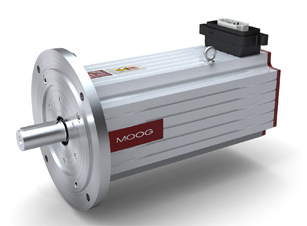 Motors and drives Nacelles on utility-scale turbines are filled with motors, drives, and controls. The latter devices are part of the turbine controls that tell motors what to do. In just a few tasks, electric motors pitch the blades on turbines to capture the most power from the available wind. Motors on yaw drives keep the nacelle pointed in a proper direction. Motor outputs on these units range from 2.2 to 22 kW. They attach to two or three planetary speed reducers to produce output torques from 2,000 to 50,000 nm. Utility-scale turbines use up to eight motors for yaw functions.
Motors and drives Nacelles on utility-scale turbines are filled with motors, drives, and controls. The latter devices are part of the turbine controls that tell motors what to do. In just a few tasks, electric motors pitch the blades on turbines to capture the most power from the available wind. Motors on yaw drives keep the nacelle pointed in a proper direction. Motor outputs on these units range from 2.2 to 22 kW. They attach to two or three planetary speed reducers to produce output torques from 2,000 to 50,000 nm. Utility-scale turbines use up to eight motors for yaw functions.
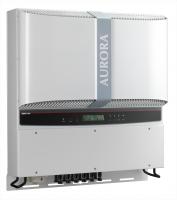 Inverters The output from a generator has three electrical characteristics: voltage, current, and frequency. Because wind speed varies, a wind-driven generator would produce these at variable rates as well. Hence, the inverter’s job is to steady two of the characteristics, and let only one of them vary. These electrical devices turn the variable current or voltage coming out of a generator into steady voltage and frequency that can charge a battery or contribute to power to a grid. Transformers These allow raising or lowering voltage in ac transmission lines.
Inverters The output from a generator has three electrical characteristics: voltage, current, and frequency. Because wind speed varies, a wind-driven generator would produce these at variable rates as well. Hence, the inverter’s job is to steady two of the characteristics, and let only one of them vary. These electrical devices turn the variable current or voltage coming out of a generator into steady voltage and frequency that can charge a battery or contribute to power to a grid. Transformers These allow raising or lowering voltage in ac transmission lines.
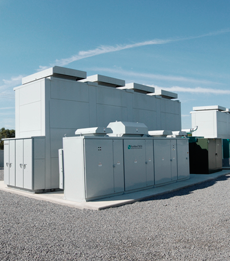 Transformers for wind turbine generators are switched with solid-state controls to limit inrush current. While potentially aiding initial energization, these electronic controls also contribute damaging harmonic voltages which can lead to overheating.
Transformers for wind turbine generators are switched with solid-state controls to limit inrush current. While potentially aiding initial energization, these electronic controls also contribute damaging harmonic voltages which can lead to overheating.
Standard voltage alternates at 60 Hz. When the transformer frequency differs by even 0.2 Hz, voltage peaks from different sources do not line up and do not produce the required amplification that would come from in-synch frequencies. The transformer tries to pass this frequency through the circuit, thereby causing extra loading.
To handle potentially hazardous heat, one transformer manufacturer winds coils on a cruciformmitered core. Its circular windings evenly spread radial and axial forces over their circumference and coolantflow ducts eliminate hot spots that lead to premature breakdown and ultimately failure. Transformers for wind turbines are usually designed so their voltage exactly matches the wind turbine’s output voltage. Generator output current is monitored at millisecond intervals. Operational limits allow up to 5% over-current for 10s before controls take a generator off the system. Because transformers used with wind turbine generators are intended to match generator output without overload sizing, the generator must function without extra capacity.
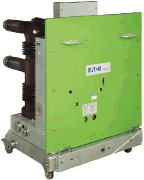 Circuit breaker These devices allow working on high-voltage equipment by electrically isolating it when necessary. Recent compact circuit breakers let panel builders place voltage transformers in the top compartment of the switchgear, which reduces the switchgear footprint from that needed by older equipment. In one version,Ppole units are encapsulated to protect high-voltage components from the environment, and motorized levering allows remotely racking (installing or removing) the breaker for enhanced safety. Recent designs also eliminate SF6, a potentially hazardous gas used as an insulator instead of air inside some switchgear.
Circuit breaker These devices allow working on high-voltage equipment by electrically isolating it when necessary. Recent compact circuit breakers let panel builders place voltage transformers in the top compartment of the switchgear, which reduces the switchgear footprint from that needed by older equipment. In one version,Ppole units are encapsulated to protect high-voltage components from the environment, and motorized levering allows remotely racking (installing or removing) the breaker for enhanced safety. Recent designs also eliminate SF6, a potentially hazardous gas used as an insulator instead of air inside some switchgear.
Remote racking allows insert and remove breakers while standing outside the arc-flash boundary (high voltage can jump an air gap and produce a fatal shock) and increase the distance between the operator and the front of the switchgear lineup during racking operations.
What’s more, breakers engineered for wind applications can be customized. Such accessories facilitate and simplify integrating the breaker into switchgear. A few custom features includeSself-aligning and coupling primary and secondary disconnecting devices, and rrip-free interlocks prevent moving a closed breaker into and out of the connect position. Also Coding pins ensure that only breakers of the correct rating can be inserted into the enclosure andDdistinct latch positions tell the technician whether the breaker is disconnected, in test, or working.
Filed Under: Transformers

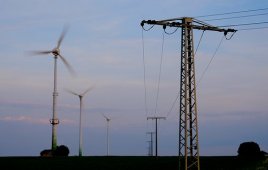
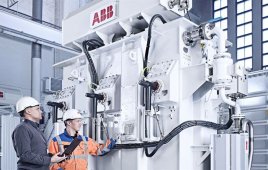
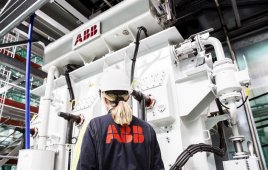
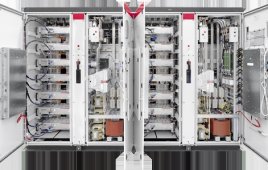
Hi Kathleen,
As an engineer dealing with sales activities in Wind Market in Turkey, I must admit that your articles, especially about Wind Technologies are really interesting and informing!
Besides, it is nice to see your cute photo at below of your each and every article!
Best regards and thanks!
🙂
Eray
Glad to hear Eray thanks for reading!